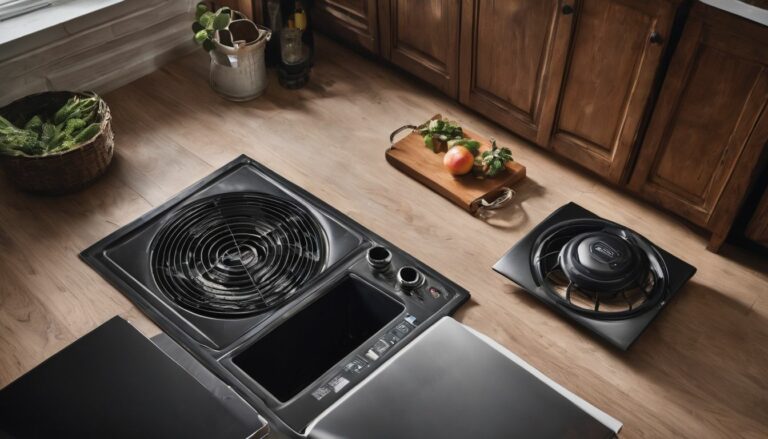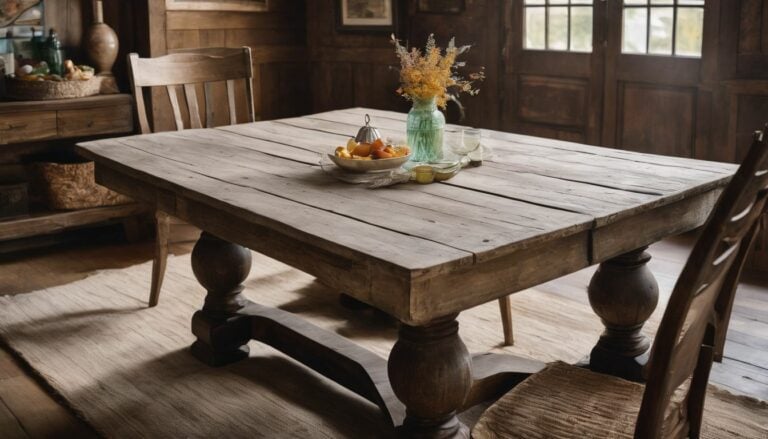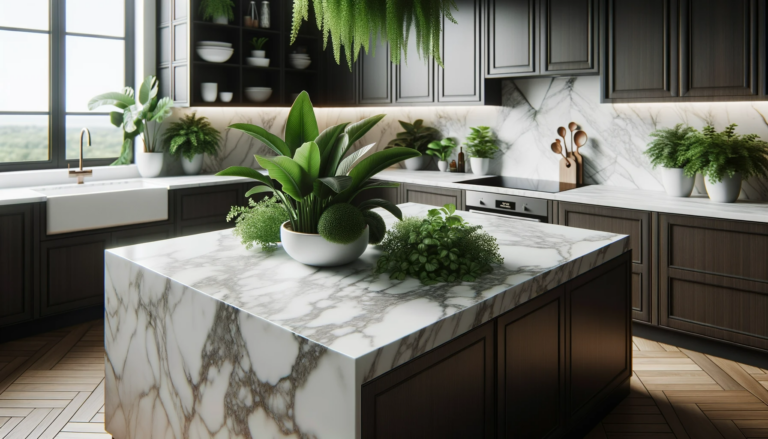Why Do You Really Need to Add Salt to Your Whitewash Recipe?
Have you ever wondered why your whitewash doesn’t stick or last as long as it should? Here’s a hint: the secret might just be regular table salt. In this article, we’ll dive into the surprising reasons adding salt to whitewash can transform your next home project.
Keep reading to unlock the full potential of this classic mixture!
The Role of Salt in Whitewash
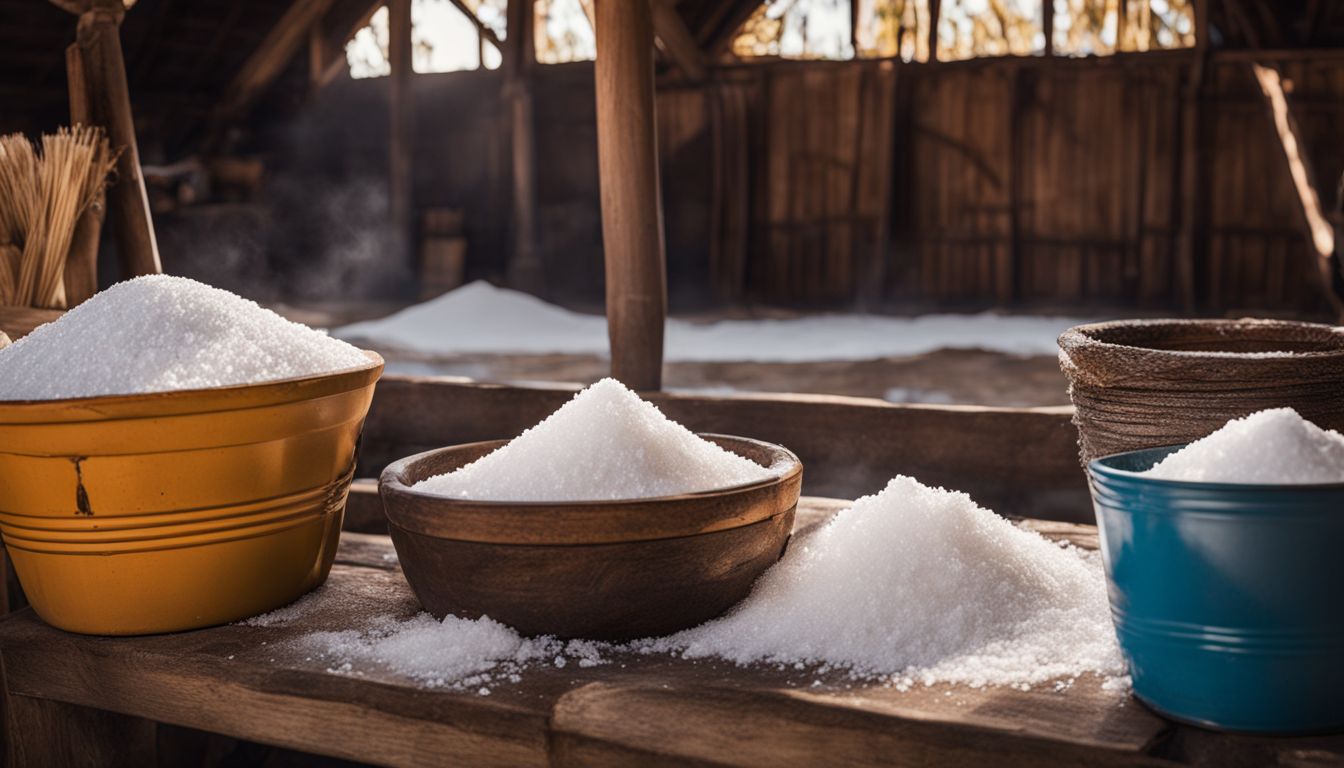
When it comes to mixing up a batch of traditional whitewash, the unsung hero of the concoction is ordinary table salt—a simple ingredient that punches well above its weight. Salt works behind the scenes, enhancing both the blend’s chemistry and its endurance against the elements; let’s delve into how this pantry staple turns plain slaked lime into a powerhouse for protection and preservation.
How salt increases the solubility of lime
Salt does a neat trick in whitewash. It makes lime dissolve better in water. Lime doesn’t like to mix with water on its own, but when you add salt, it changes the game. The right amount of salt grabs onto the tiny particles of lime and helps them spread out in the water.
Think of it like making lemonade – without stirring, you’d just have sugar at the bottom of your glass! In whitewash, two cups of salt with slaked lime and a gallon of water gets things moving.
When everything’s mixed well, this special blend sticks better to surfaces. Walls love it because they get an even coating that looks great and lasts long.
The impact of salt on wetting and drying cycles
Salt does more than flavor our food; it plays a key role in whitewash performance. It affects how the mixture handles moisture. Whitewash needs to dry properly for strength and durability.
With salt, wetting and drying cycles don’t weaken the coating as much. Moisture used to be a big problem, leaving white spots after heavy rain or morning dew. Now, salt helps manage that moisture.
Mixing lime with salt changes everything in whitewash recipes. The solubility of lime increases, giving you a smoother blend. This trick means better coverage on surfaces like wood grain or countertops.
Next up is where we dive into this magic mixing process – blending lime, salt, and water to make whitewash work wonders.
The Process of Making Whitewash with Salt
Diving into the mixing bowl of tradition, we uncover the craft of creating whitewash with salt—a simple tweak in ingredients that holds the secret to a more resilient finish. This alchemy of lime and salt comes alive as we carefully stir in water, watching it transform into the perfect consistency for brushing onto surfaces begging for a breath of new life.
Mixing lime and salt
Adding salt to whitewash makes a big difference. It changes the mixture just enough to work better. Here is a step-by-step on mixing lime and salt:
- Start with slaked lime – This is lime that’s been mixed with water, and it forms the base of your whitewash.
- Measure the salt – Use regular table salt since it’s easy to find and works great.
- Pour the salt into a bucket – You’ll want to use a clean container to avoid any unwanted stuff in your whitewash.
- Add the slaked lime to the bucket – Carefully put it in so you don’t make too much dust or spill.
- Mix them together – Stir until all the salt has dissolved and mixed well with the lime.
- Check consistency – The mix should be thick but still runny, sort of like paint from a can.
- Adjust as needed – If it’s too thick, add water; if too thin, more slaked lime can do the trick.
Adding water and adjusting consistency
Mixing lime for whitewash is an art. You want it just right, not too thick and not too runny.
- Start with slaked lime in a large bucket or container. This is your base for the whitewash.
- Slowly pour in water and stir continuously. Think of making a cake batter; you don’t want any lumps.
- Check the mixture’s consistency regularly as you add water. It should feel like thick cream that can stick to a brush but still flow.
- Use the back of a spoon or a stick to test its thickness. If the mix coats the spoon but drips off slowly, it’s getting close.
- If the mixture feels too watery, add more slaked lime. Add little by little to avoid overshooting the desired thickness.
- In case it gets too thick, don’t worry! Just mix in small amounts of water until it thins out again.
- Achieving the right consistency is crucial because this affects how well the whitewash adheres to surfaces.
The Benefits of Using Salt in Whitewash
Diving into the heart of our whitewash concoction, the addition of salt isn’t just a whimsical step—it’s a game-changer for enhancing the mixture’s performance. Picture this: Salt marries durability to your walls, braving weather tantrums with grace and ensuring your white haven sticks around much longer than expected.
Enhanced durability and adherence
Salt turns plain whitewash into a powerhouse for sticking to surfaces. It ramps up how well the white wash grabs onto walls, especially masonry. This means your whitewash stays put longer and puts up a tough fight against peeling or flaking away.
Imagine painting once and having it last for years; that’s the magic of adding salt.
Now, not only does it stick better, but salt also makes the whitewash tougher overall. Chalking resistance gets a big boost—no more powdery residue when you brush against it after drying.
Your wall stays clean and bright through sun, wind, and rain. With this kind of durability, every stroke of your brush is an investment in long-lasting beauty.
Moving on to weather conditions..
Increased resistance to weather conditions
Adding salt to whitewash improves its battle against rain, snow, and sun. It acts like a shield, making the surface tougher and more resistant to the harsh outdoor conditions. This secret ingredient helps the lime stick better and stay longer on walls or fences, even through stormy weather.
Think of it as an extra layer of protection that keeps your paint job looking fresh for many seasons.
Salt in whitewash also fights off pests that might damage wood surfaces. With this added defense, your buildings stand strong against insects that love to munch on timber. Let’s explore what goes into mixing up this powerful protective coat in our next section about the main ingredients involved in whitewash.
Understanding Whitewash
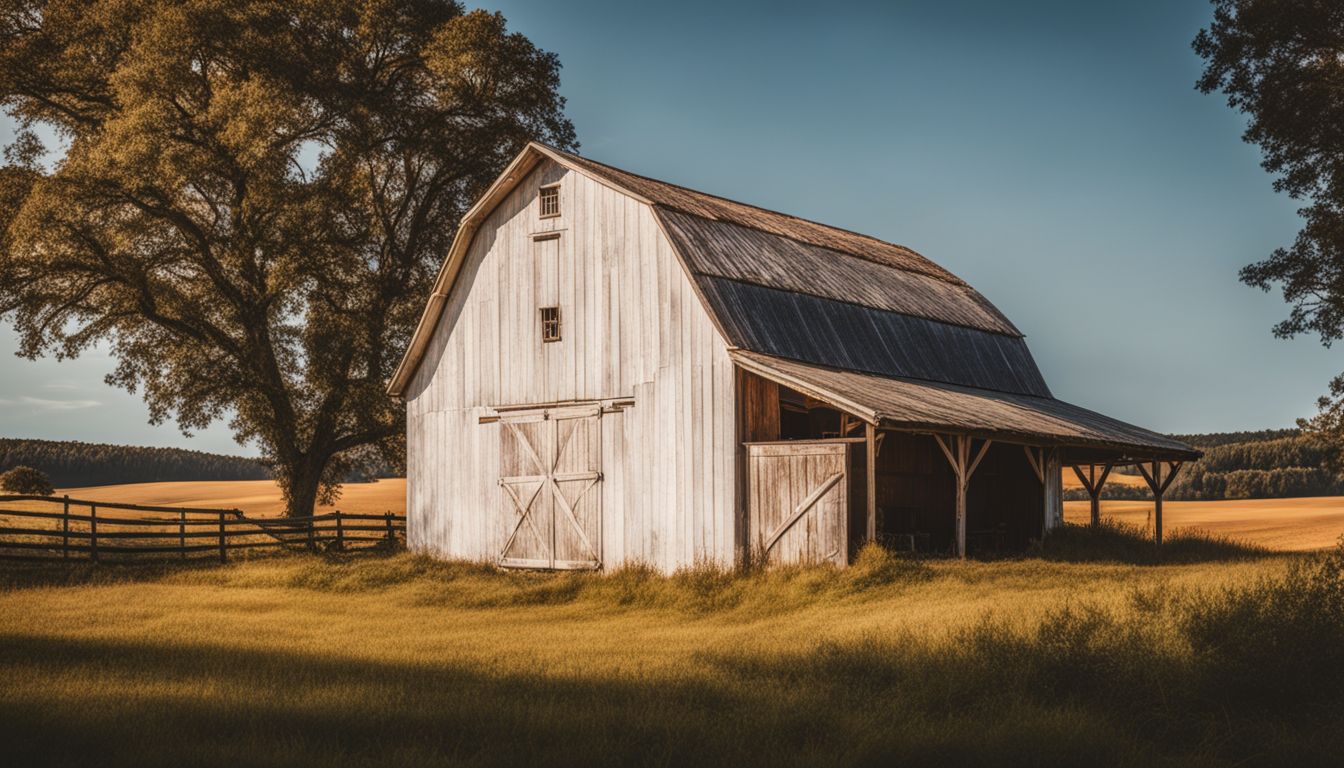
Understanding Whitewash is diving into the realm of timeless aesthetic and practical applications—whitewash paints a story far richer than its humble appearance suggests. This traditional blend, marrying simplicity with utility, has graced structures with its protective embrace for centuries, transcending mere color to become synonymous with preservation itself.
Definition and uses of whitewash
Whitewash is a simple paint made from mixing water with lime, specifically calcium hydroxide. It creates a white coating for surfaces like walls, fences, and barns. This mixture dates back centuries and serves several purposes.
People use it to brighten up spaces and give them a clean look. It also helps protect structures from the sun’s harsh rays by reflecting sunlight.
Beyond aesthetics, whitewash has practical benefits too. Farmers apply it to trees to prevent sunburn on trunks and lower branches. Also, because of its high pH level, it can reduce insect damage on treated surfaces.
Whitewashing was popular in Colonial America for these reasons – keeping buildings cool and pests at bay while adding charm.
The traditional whitewash recipe
Whitewash has been a trusted way to coat walls over many years. Now, let’s break down what goes into making it the traditional way.
- Start with 2 cups of salt. Grab some regular table salt from the kitchen.
- Heat up 1 gallon of water until it’s warm. You’ll mix this with the salt.
- Stir the salt into the warm water. Keep stirring until all that salt dissolves completely.
- Now, take 6 to 8 cups of hydrated lime for the mix. Hydrated lime is your main ingredient.
- Slowly add the hydrated lime to your salty water. Pour it in while you keep stirring.
- Aim for a stiff paste – like consistency. If it’s too thick, add a bit more water; if too thin, add more lime.
- Mix everything well. Make sure there are no lumps left in there.
Main Ingredients Involved in Whitewash
Lime is the star of the whitewash mix, reacting with carbon dioxide in the air to form a tough layer. Water acts as a thinner, making sure the lime spreads evenly over surfaces. People often stir in salt to help the mixture stick better and last longer on walls or fences.
Binders bring everything together, giving whitewash more strength. Sometimes folks choose sugar or flour for this job, while others prefer linseed oil for its natural resistance to water.
Every choice changes how whitewash behaves, from how it looks to how well it holds up against rain and sun.
Conclusion
Salt is a game-changer for whitewash. It not only makes the mixture smoother but also gives it super strength to stick better and last longer. When you add salt, you’re fighting off weather damage and decay too.
Think of it as nature’s own preservative that keeps your walls looking fresh and clean. Remember, a pinch of salt goes a long way in making your whitewash work wonders!
FAQs
1. What does salt do in whitewash?
Salt in whitewash acts like a glue—it’s a binding agent that helps the white wash stick better to surfaces, such as your wall or counter top.
2. Is potassium aluminum sulfate the same as potash alum?
Yes, indeed! Potassium aluminum sulfate is also known as potash alum—both terms refer to the same substance. It makes sure everything binds well when making lime washes.
3. Can you use simple ingredients like baking powder instead of commercial salts for whitewashing?
Ah, it’s not quite the same—baking powder doesn’t have what it takes to make things stick like other salts do. For real staying power, you’ll want something stronger such as aluminum sulfate.
4. Why is soluble in water important for whitewashing agents?
When an ingredient dissolves easily in water, it mixes thoroughly into the whitewash mixture. This ensures even coverage and bonding across your entire surface without any gritty parts!
5. Do other materials work with salt to create effective whitewashes?
Absolutely! Mix together slaked lime with raw linseed oil or blend sugar cane juice with Portland cement—they both pair perfectly with salty substances to give you a smooth and durable finish.





